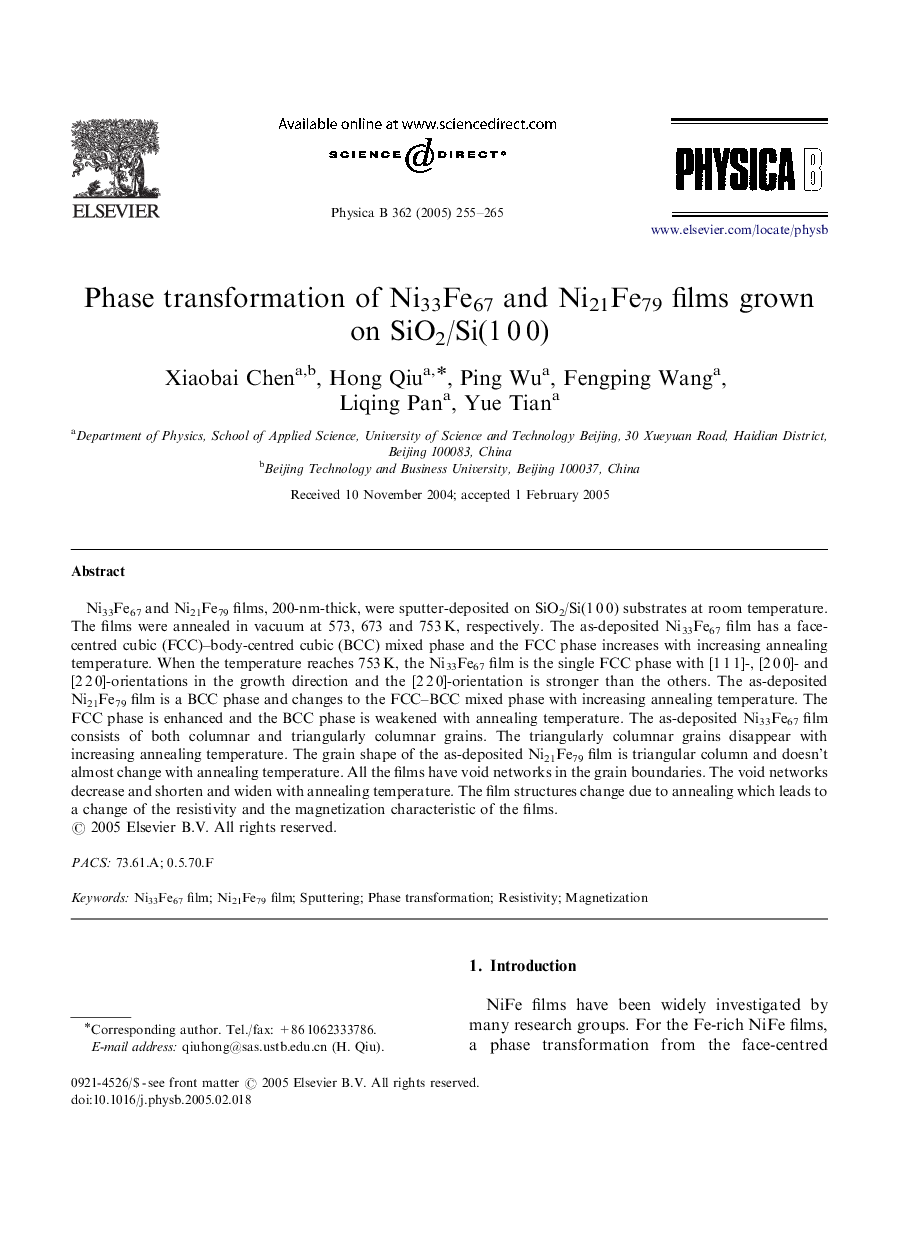| Article ID | Journal | Published Year | Pages | File Type |
|---|---|---|---|---|
| 9837643 | Physica B: Condensed Matter | 2005 | 11 Pages |
Abstract
Ni33Fe67 and Ni21Fe79 films, 200-nm-thick, were sputter-deposited on SiO2/Si(1Â 0Â 0) substrates at room temperature. The films were annealed in vacuum at 573, 673 and 753Â K, respectively. The as-deposited Ni33Fe67 film has a face-centred cubic (FCC)-body-centred cubic (BCC) mixed phase and the FCC phase increases with increasing annealing temperature. When the temperature reaches 753Â K, the Ni33Fe67 film is the single FCC phase with [1Â 1Â 1]-, [2Â 0Â 0]- and [2Â 2Â 0]-orientations in the growth direction and the [2Â 2Â 0]-orientation is stronger than the others. The as-deposited Ni21Fe79 film is a BCC phase and changes to the FCC-BCC mixed phase with increasing annealing temperature. The FCC phase is enhanced and the BCC phase is weakened with annealing temperature. The as-deposited Ni33Fe67 film consists of both columnar and triangularly columnar grains. The triangularly columnar grains disappear with increasing annealing temperature. The grain shape of the as-deposited Ni21Fe79 film is triangular column and doesn't almost change with annealing temperature. All the films have void networks in the grain boundaries. The void networks decrease and shorten and widen with annealing temperature. The film structures change due to annealing which leads to a change of the resistivity and the magnetization characteristic of the films.
Related Topics
Physical Sciences and Engineering
Physics and Astronomy
Condensed Matter Physics
Authors
Xiaobai Chen, Hong Qiu, Ping Wu, Fengping Wang, Liqing Pan, Yue Tian,
